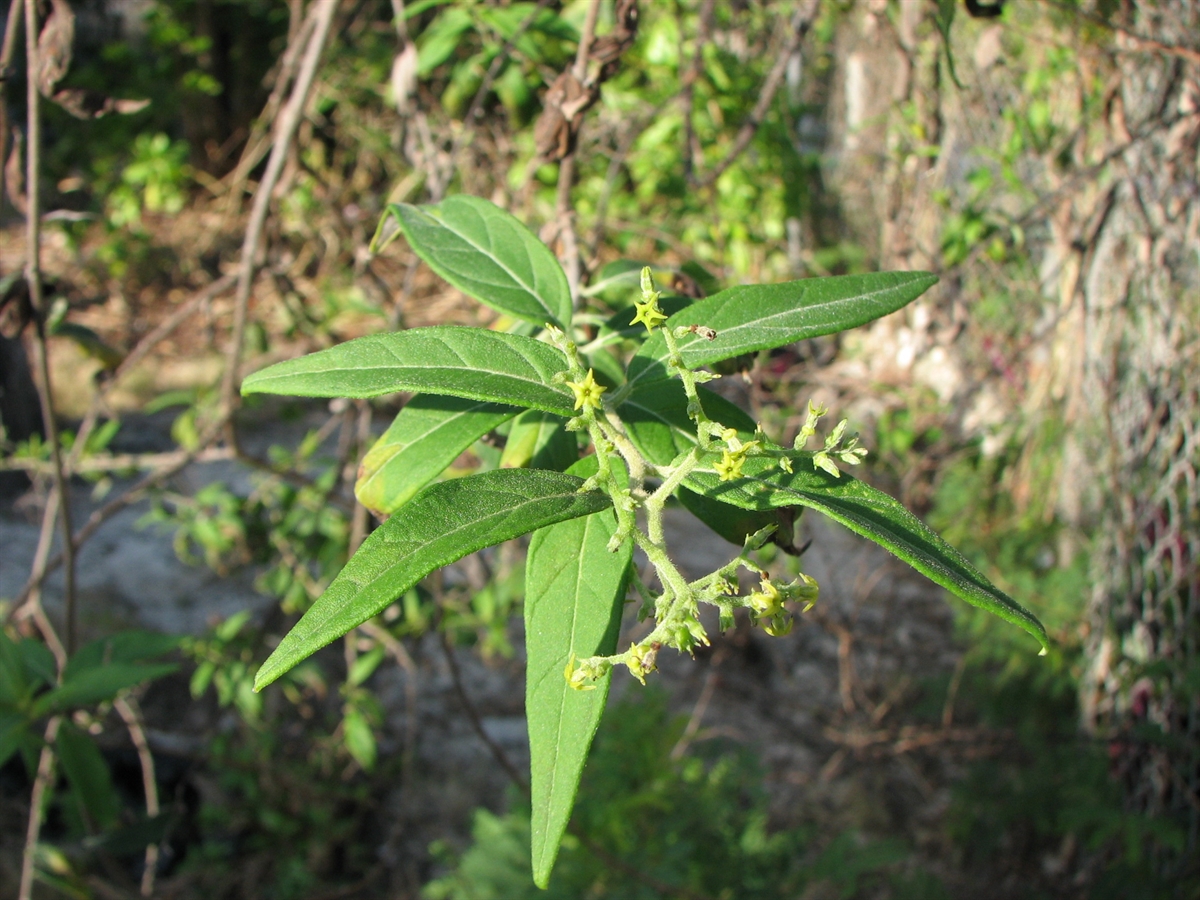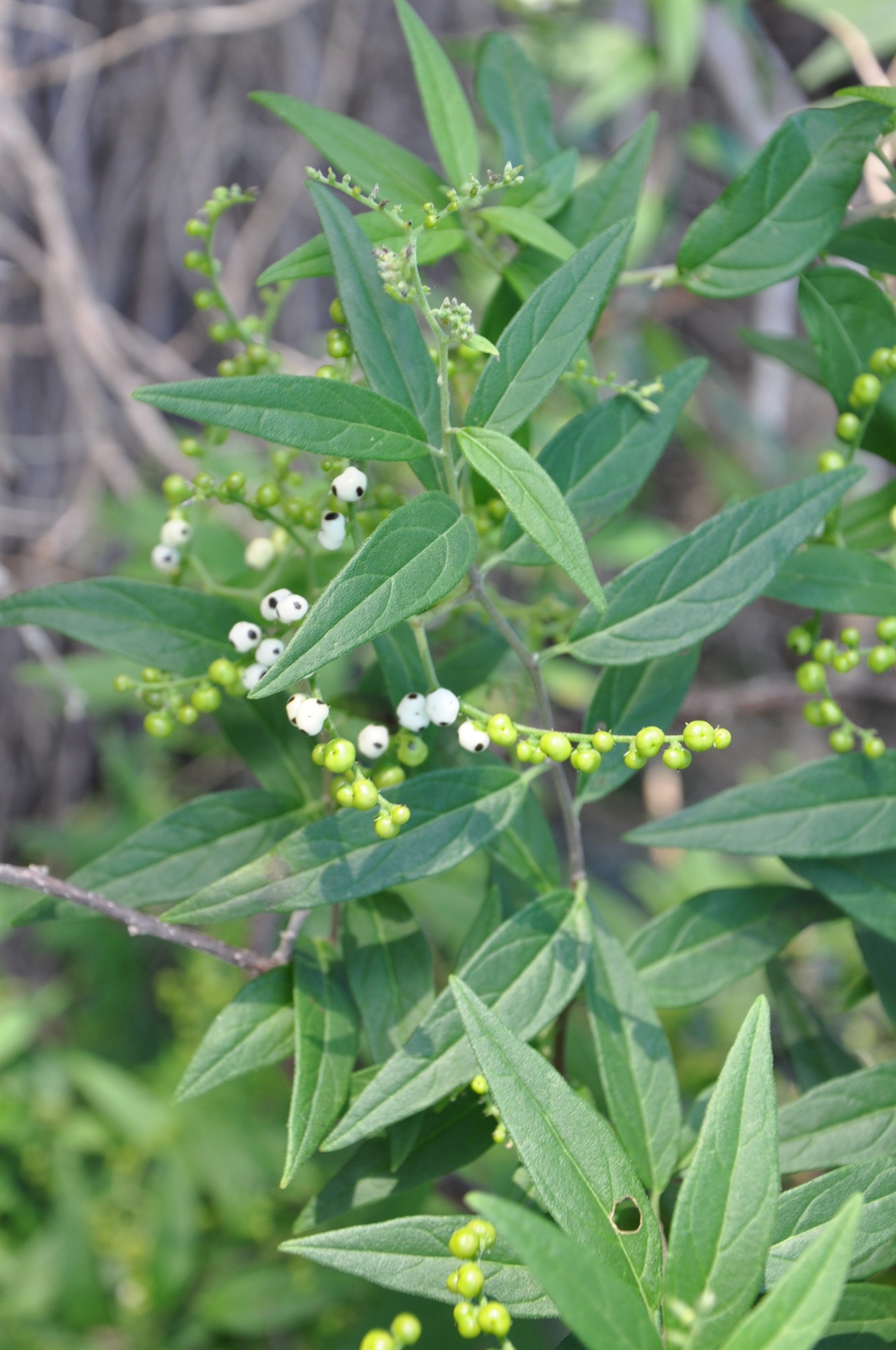Habit: Myriopus poliochros grows as a woody climbing/trailing vine to 4 meters in length. The stems and leaves with gray tomentose pubescence. The leaves are arranged alternately, lanceolate, to 8 cm in length with an acuminate leaf apex and an entire margin. The leaves are tomentose on the abaxial surfaces causing the leaves to have a grayish appearance.
The complete, perfect, actinomorphic flowers are arranged in terminal and axillary helicoid cymes. The calyx has 5 fused at base greenish sepals. The corolla has 5 yellow green fused petals that form a tube with 5 terminal lobes. There are 5 stamens fused to the throat of the corolla tube. The ovary is superior with 4 locules. The fruit is a drupe at maturity.
Habitat: Myriopus poliochros occurs along the edges and interiors of Dry Broadleaf Evergreen Formation –Woodland/Shrublands (scrublands).
Distribution: Myriopus poliochros occurs on central and southern island groupings in the Lucayan Archipelago, Greater Antilles.
Medicinal/Cultural/Economic usage: Myriopus poliochros is not known to be used medicinally in the Lucayan Archipelago.

